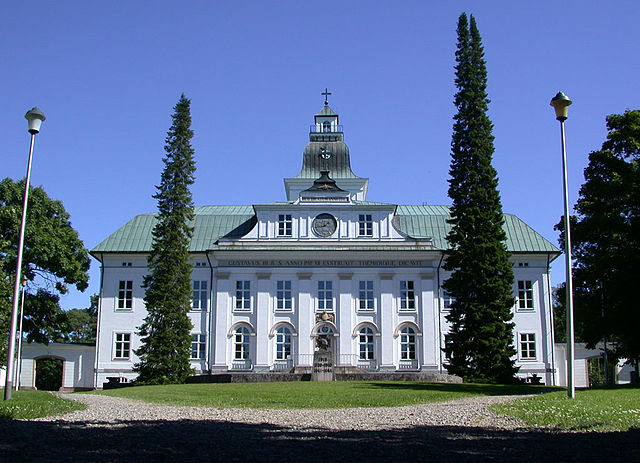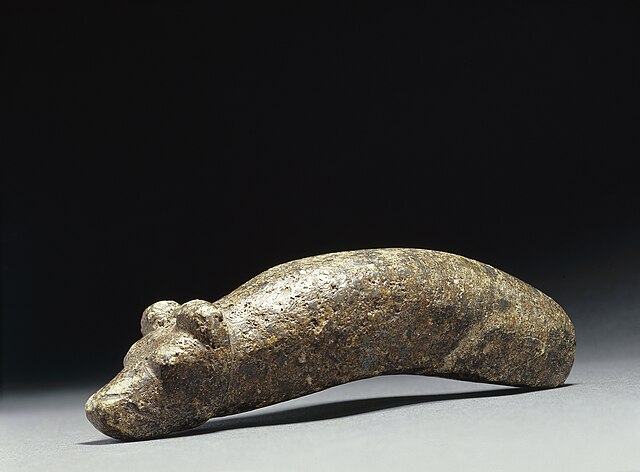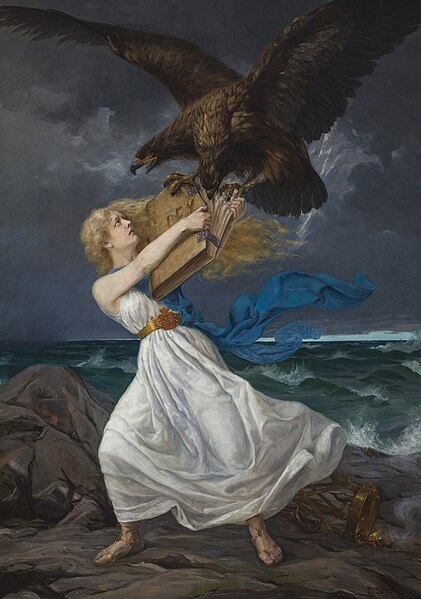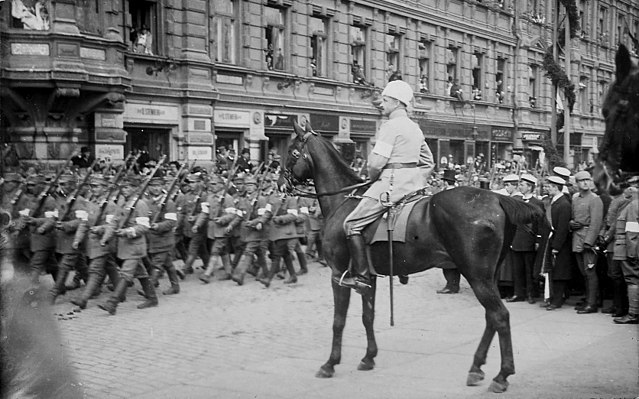Vaasa, in the years 1855–1917 as Nikolainkaupunki, is a city in Finland and the regional capital of Ostrobothnia. It is located on the west coast of the country, on the Gulf of Bothnia. The population of Vaasa is approximately 69,000, while the sub-region has a population of approximately 110,000. It is the 14th most populous municipality in Finland, and the tenth most populous urban area in the country.
Clockwise from top-left: Vaasa Market Hall, the ruins of Saint Mary Church, the Court of Appeal, the Holy Trinity Church, Vaasa railway station, the Port of Vaasa in Vaskiluoto, and Kurtenia House; and in the middle (from top to bottom) Vaasa City Hall, and the Kauppapuistikko esplanade
Old Vaasa in the 1840s by Johan Knutsson
The Court of Appeal, nowadays the Church of Korsholm, survived the fire of 1852
Illustration in Finland framstäldt i teckningar edited by Zacharias Topelius and published 1845–1852.
Finland, officially the Republic of Finland, is a Nordic country in Northern Europe. It borders Sweden to the northwest, Norway to the north, and Russia to the east, with the Gulf of Bothnia to the west and the Gulf of Finland to the south, opposite Estonia. Finland covers an area of 338,145 square kilometres (130,559 sq mi) and has a population of 5.6 million. Helsinki is the capital and largest city. The vast majority of the population are ethnic Finns. The official languages are Finnish and Swedish, of which 84.9 percent and 5.1 percent of the population speak the first as their mother tongue. Finland's climate varies from humid continental in the south to boreal in the north. The land cover is predominantly boreal forest biome, with more than 180,000 recorded lakes.
Stone Age bear head gavel found in Paltamo, Kainuu
Now lying within Helsinki, Suomenlinna is a UNESCO World Heritage Site consisting of an inhabited 18th-century sea fortress built on six islands. It is one of Finland's most popular tourist attractions.
Edvard Isto, The Attack, 1899. The Russian eagle is attacking the Finnish Maiden, trying to steal her book of laws.
Finnish military leader and statesman C. G. E. Mannerheim as general officer leading the White Victory Parade at the end of the Finnish Civil War in Helsinki, 1918








